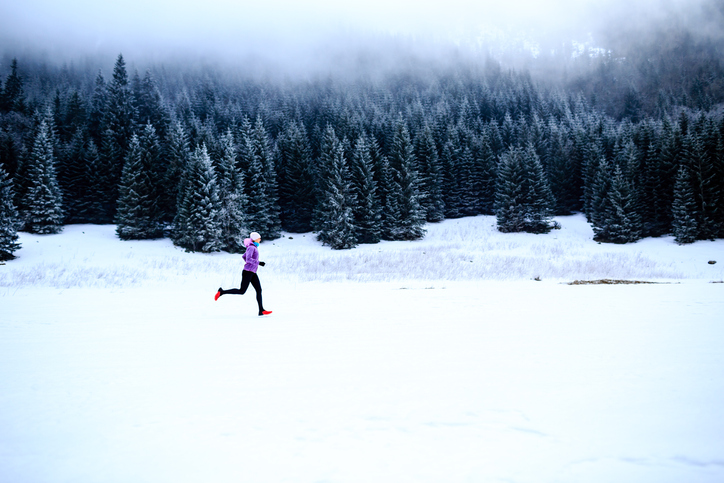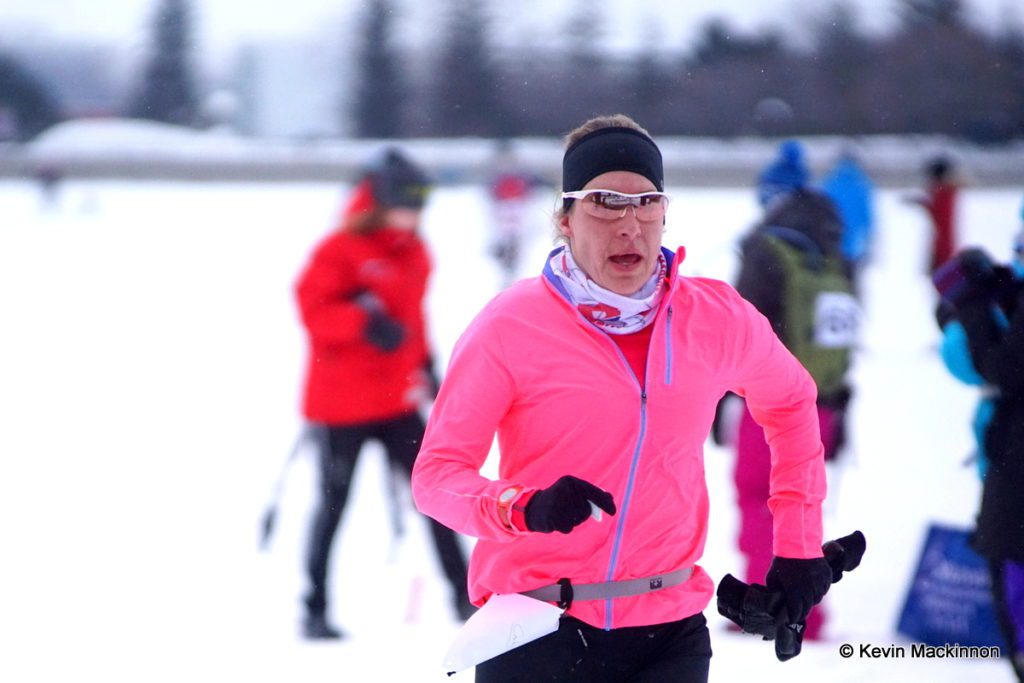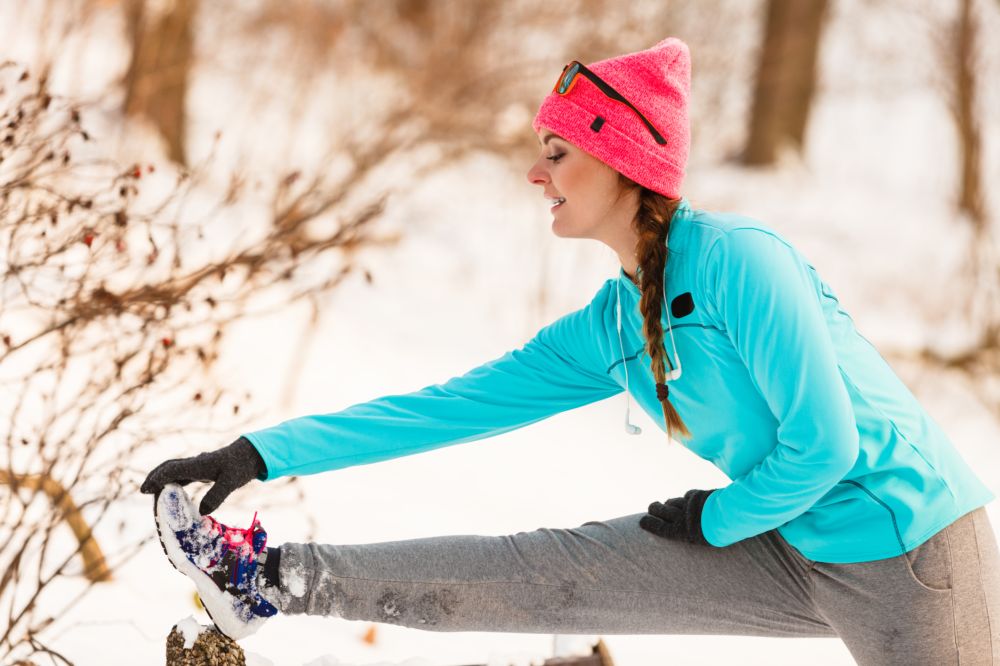Are you more likely to get injured in the winter?
Running in the cold weather can make you more susceptible to inuries if you're not careful. Follow these tips to stay pain-free all winter long
 Photo by:
Getty Images
Photo by:
Getty Images
Winter is a great time for running for so many reasons — the cool air can be refreshing, it stops you from spending the entire season cooped up indoors and with fewer people outside you often get the sidewalks and trails to yourself. That being said, running at this time of year can be more treacherous thanks to the cold, ice and snow, making you more susceptible to injuries. Before you head out for your run this winter, make sure you’re aware of the risks and you plan for them accordingly.

Does winter weather lead to more injuries?
While winter weather doesn’t necessarily cause injuries, there are several factors at this time of year that can make you more susceptible to them if you’re not careful. The most obvious of these, of course, are slips and falls. If you’re running in the dark or on a snow-covered path (or both), it’s easy to not notice a patch of black ice until it’s under your feet. A wipe-out on the ice could cause anything from a simple bruised knee to a broken bone, which could throw you off your running schedule for anywhere from a few days to several weeks.
Aside from falls, winter running can also increase your risk for regular running-related injuries, like muscle and tendon strains or tears. This is because our bodies don’t tend to function optimally in cold temperatures, and it takes much longer for our muscles to warm up on a winter run. A tight, cold muscle forced to contract at a high intensity is more vulnerable to injuries, especially if you are someone who already deals with nagging or recurring issues. Some of the more common winter running injuries include the following.
Ankle and knee sprains: Uneven terrain requires a lot more work by the stabilizer muscles around these joints, which over time can cause them to become strained. This will make them weaker, which makes you more likely to sprain your ankle or knee if you slip on some snow or ice. It can also cause you to unknowingly change your stride or overcompensate with other muscles, leading to injury.
Foot or Achilles problems: If you already deal with plantar fasciitis or Achilles tendonitis, running in slippery conditions could make the problem worse. This is because there is more stress placed on your foot strike when running on icy surfaces, which is absorbed by the plantar fascia and the Achilles.
Groin injuries: when running on the ice and snow, you slide back a bit with every step. This can put extra strain on the adductor muscles of your inner thighs. On top of that, if your leg slips out from under you while you’re running, your groin muscles can become overstretched, leading to a strain or even a tear.
Resurgence of an old injury: if you’ve had an injury in the past (like runners knee, shin splints or foot pain), or if you deal with a more chronic or recurring injury, running in the snow and ice could make it worse or cause it to return. This, again, is because running with cold muscles makes them more prone to issues, and running on slippery surfaces places more strain on your muscles, tendons and ligaments.
Foot or Achilles problems: If you already deal with plantar fasciitis or Achilles tendonitis, running in slippery conditions could make the problem worse. This is because there is more stress placed on your foot strike when running on icy surfaces, which is absorbed by the plantar fascia and the Achilles.
Groin injuries: when running on the ice and snow, you slide back a bit with every step. This can put extra strain on the adductor muscles of your inner thighs. On top of that, if your leg slips out from under you while you’re running, your groin muscles can become overstretched, leading to a strain or even a tear.
Resurgence of an old injury: if you’ve had an injury in the past (like runners knee, shin splints or foot pain), or if you deal with a more chronic or recurring injury, running in the snow and ice could make it worse or cause it to return. This, again, is because running with cold muscles makes them more prone to issues, and running on slippery surfaces places more strain on your muscles, tendons and ligaments.
How to prevent winter running injuries
Strength training is important for runners year-round, but it becomes even more important during the winter because having stronger muscles, ligaments and tendons will help your body handle the increased strain caused by winter conditions. In fact, winter is the perfect time to swap out one or two of your running days with a strength workout. Not only will this make you more injury-resilient, but it will make you a stronger, faster runner come the spring.
Properly warming up before heading out for a run is equally as important as strength training. Doing some light mobility to get the blood flowing through your muscles prior to your run will prevent you from running on cold muscles, lowering your risk for injury. It doesn’t have to take long — a quick five minutes will do — but it can make all the difference.
You may also want to adjust your training plan during the winter, and be prepared to adapt your workouts to the conditions. A cold, snowy day is likely not the best time to be cranking out a speed workout, which is why the winter is a great time to simply put in mileage and build a good base for the spring. Of course, there may be some days when the weather is bad enough to skip the run altogether. If conditions are dangerous (for example, if there’s a blizzard, freezing rain or your entire route is covered in a sheet of ice) you may want to consider choosing an indoor activity.
Finally, having the right winter gear can make a big difference when it comes to injury-prevention in the winter. This means having proper clothing to keep your muscles warm while you run, and having shoes with some traction to help you avoid slipping on the snow and ice. Even road runners may want to consider investing in some trial shoes for the winter months, since they tend to provide more stability on difficult terrain.
Related: How to dress for winter running
This, of course, does not mean you should avoid winter running altogether. Here at Triathlon Magzine Canada, we encourage everyone to get outside and enjoy everything the season has to offer. It may take a bit more work and planning, but if you’re prepared for the conditions, running at this time of year can be both safe and enjoyable.
How to prevent winter running injuries
Strength training is important for runners year-round, but it becomes even more important during the winter because having stronger muscles, ligaments and tendons will help your body handle the increased strain caused by winter conditions. In fact, winter is the perfect time to swap out one or two of your running days with a strength workout. Not only will this make you more injury-resilient, but it will make you a stronger, faster runner come the spring.
Properly warming up before heading out for a run is equally as important as strength training. Doing some light mobility to get the blood flowing through your muscles prior to your run will prevent you from running on cold muscles, lowering your risk for injury. It doesn’t have to take long — a quick five minutes will do — but it can make all the difference.
You may also want to adjust your training plan during the winter, and be prepared to adapt your workouts to the conditions. A cold, snowy day is likely not the best time to be cranking out a speed workout, which is why the winter is a great time to simply put in mileage and build a good base for the spring. Of course, there may be some days when the weather is bad enough to skip the run altogether. If conditions are dangerous (for example, if there’s a blizzard, freezing rain or your entire route is covered in a sheet of ice) you may want to consider choosing an indoor activity.
Finally, having the right winter gear can make a big difference when it comes to injury-prevention in the winter. This means having proper clothing to keep your muscles warm while you run, and having shoes with some traction to help you avoid slipping on the snow and ice. Even road runners may want to consider investing in some trial shoes for the winter months, since they tend to provide more stability on difficult terrain.
This, of course, does not mean you should avoid winter running altogether. Here at Canadian Running, we encourage everyone to get outside and enjoy everything the season has to offer. It may take a bit more work and planning, but if you’re prepared for the conditions, running at this time of year can be both safe and enjoyable.
This story originally appeared on the Canadian Running Magazine website.

